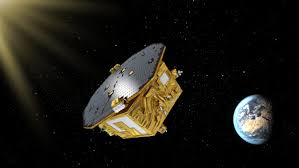LISA Mission : NASA

The National Aeronautics and Space Administration (NASA) revealed the first look of the prototype for six telescopes that will help LISA’s three spacecraft detect gravitational waves in space.
- The Laser Interferometer Space Antenna (LISA) mission is a collaborative effort between NASA and the European Space Agency (ESA) set to launch in the mid-2030s.
- The main objective of the mission is to detect and study gravitational waves by putting three spacecraft into the Earth’s orbit and positioning them in a triangular format with 1.6 million miles on each side.
- It will be the “first gravitational wave detector in space” and will “explore the fundamental nature of gravity and black holes”.
- It will also probe the rate of expansion of the Universe.
- All three spacecraft will have two telescopes each. The LISA mission will use lasers to detect gravitational waves.
- The LISA mission will comprise three spacecraft. These three spacecraft will fly in a triangular formation behind the Earth as our planet orbits the Sun.
- The spacecraft will sit in a heliocentric orbit, about 50 million km from Earth, with a distance of around 2.5 million km between each spacecraft.
- LISA will detect ripples in spacetime through subtle changes in the distances between free-floating cubes nestled within each spacecraft.
- Changes in the relative distances between these golden cubes will be tracked with extreme accuracy using laser interferometry.




